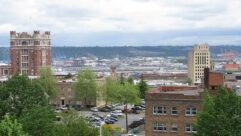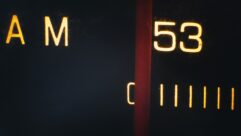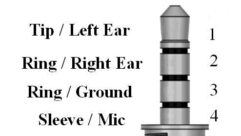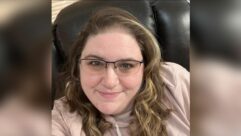My interest in radio began in 1948 when my brother hooked up a long piece of copper wire to the antenna terminal of our family’s 6-S-229 Zenith radio. He began turning the dial on the shortwave band. I was five but I remember how suddenly the speaker began making strange sounds of squeals and whistles, and then we heard the chimes of Big Ben from London’s BBC and English transmissions from Radio Moscow. Shortwave station HCJB came blasting through from Quito, Ecuador, and I tried to envision their station setting high atop the Andes Mountains.
When I entered junior high school in 1956, I purchased a NC-109 National shortwave radio. I would sit with headphones over my ears for hours, listening to ham operators talking back and forth and relaying messages for the Armed Forces Radio Network. I would set my wristwatch to the change in tone broadcast from the National Bureau of Standards WWV. I began collecting QSL cards by the hundreds.
Four years later I was in senior high school taking my required second semester of physics. Mr. Stanley, my physics teacher, told us we could earn extra credit if we completed a physics project. We were studying elementary electronics, magnetism and radio. That is when I came up with the idea of building an AM radio transmitter.
(click thumbnail)
A line sketch of the ‘bootleg radio’ setup described by the author Knightstown, Ind., with a population of a couple thousand in 1960, did not have a station, and in my opinion, it needed one. The “cool” station at that time was WIBC, the 50,000 watt giant—1070 in Indianapolis. Knightstown was about 40 miles from Indianapolis and the radio station’s signal would dominate every other one on the dial.
Disc jockey Dick Summer would play the newest rock-and-roll hits from his WIBC radio booth high atop Merrill’s Hi Decker drive-in restaurant on 38th Street. His show would include what he called the “make it or break it game.” He would spin new 45 rpm releases and ask patrons parked in their cars at Merrill’s to vote on whether to allow the record to continue to be played on future shows or if he should break it. Patrons would sound their car horns when asked for their vote. Horns could clearly be heard over the air. If they wanted the record broken, he would break it over his microphone.
To my high school buddies and me, disc jockeys such as Dick Summer and rock-and-roll music of the ’60s were the ultimate form of radio entertainment. Why not put a radio station on the air in Knightstown where we could play the entire top 20 hits for everyone in our local high school?
You-build-it
With a mail order kit from Allied Radio that had been designed for electronic experiments, I began building a low-power radio transmitter. Technically the experiment was titled “how to build a phone oscillator.” The kit contained one vacuum tube, a small electrical transformer, several resistors and capacitors, and a tuning coil. My job was to follow the schematic, place the components in the right place and solder them together. Then according to the instructions, by attaching a ground wire, antenna and microphone, I would be “on the air.”
My dad was the pastor of the local Methodist Church; we lived in the parsonage and my bedroom faced the church. It had a very high steeple and would provide a fantastic opportunity to gain height for my radio station antenna.
I knew from my physics course that placing an antenna high up would provide better range for the signal. I also knew that a long length of wire attached to my shortwave radio brought in more signals than a short wire. Therefore it made good sense to use a long wire for my transmitter antenna. My plan was to run a lead wire from the phone oscillator out of the bedroom window up to a long wire attached to the very top of the church steeple.
I called my buddies John and Barry and asked them to come over and help me put up the antenna. As we were talking about how we would program music and each become disc jockeys, Barry asked a question. “Don’t we need a license to run a radio station?”
“No, because we are going to use only a phone oscillator, not a radio transmitter, and it doesn’t generate much power. They are legal. Our antenna height will make up for the power loss and that is why we need to get it as high as possible. If we hook the antenna to the top of the steeple we’ll probably be able to reach the outskirts of town, but not much further.” I thought we might be able to get about a one-mile radius.
John asked, “Uh guys, how do you plan to attach the antenna to the top of the steeple?”
“We’ll have to climb up inside of the steeple and drill a little hole through the wall. Then we’ll feed the antenna wire out through the hole and isolate it from the wall using a rubber tube. Next we’ll attach the antenna wire to an insulator on the inside. That should work fine.”
Unsure if we could get inside the steeple, the three of us proceeded into the church and climbed the stairs to the second floor. The ceilings of the church were high. Straight up about 16 feet directly over the top of the staircase was a small door to the steeple. There was no way we could get inside without erecting a very high ladder or scaffolding. We had to rethink our antenna installation.
Warm glow
John came up with the next idea. “Why don’t we tie one end of the antenna to the top of the window ledge of this window? We’re pretty high up and we can run the wire from here over to the electric pole behind the police station. That’s about a hundred yards. Then we can connect your lead wire to the center of the antenna wire. Won’t that work just about as well?”
“OK, that’s a good idea,” I said. “In fact, what I can do is attach another section to the top wire and make us a directional antenna. We’ll make a box-type antenna like they use for shortwave radio stations. That may get us more distance.”
By early afternoon the new antenna was in place. It turned out different than originally planned and now included a bare copper wire that ran from an insulator nailed to a telephone pole directly behind the city police department all the way to the window on the second floor of the church, about 100 yards.
I formed a 10 foot rectangular box out of household electrical wire and attached it at the center of the long wire. Next I took additional copper wire and made an “X” within the box. Then I took a 300 ohm lead wire and attached it to the center of the “X.” The antenna was now in place and appeared similar to one I had seen in a picture of a QSL card that I had received from a foreign shortwave station. With the length and design, that should do the trick.
Next we attached the lead wire from the antenna to the phone oscillator. The microphone was attached where the schematic indicated and the unit was plugged into the wall socket. The filaments of the little one-tube phone oscillator began to glow. We were ready to give it a test.
I turned my bedroom AM radio and dialed it to the top of the band. Then very carefully I began turning the variable capacitor of the phone oscillator, turning it ever so slowly and listening to the radio for a signal.
Then, just like magic, it was there. All of the noise at the top of the band disappeared and we could hear a small humming. The excitement was intense.
“I think it works! Let’s try the microphone.”
John picked up the microphone, threw the mic switch and began talking: “Hello, can you hear me? Testing, one, two, three.”
It was working. We were on the air, though the little unit was humming, and every time John would move the microphone closer to the oscillator the humming would become louder.
“I think I know how we can fix that humming noise,” I said. “I have a capacitor that I took out of a florescent lamp and if I place it between the antenna output and the ground, it may get rid of that noise. I think this is what they use to keep florescent lamps from humming on radios. Let’s try it.”
I unplugged the phone oscillator and the AM radio began again to produce static noise. John and Berry watched intensely. I wired in the capacitor and plugged the unit back into the wall socket. As the little phone oscillator tube began to glow the AM radio immediately went quiet — and this time it was very quiet. The signal seemed to be far more powerful. No humming.
I picked up the microphone. “This is K-town Radio, 1610 on your AM dial!” The bedroom radio began to squeal from microphone feedback.
“Guys, I think we’ve got ourselves a radio station!”
The summer of 1959 was lots of fun. Every Thursday afternoon and Saturday morning, K-town Radio: WKPB—1610K was on the air. Music of the late ’50s was played; all of the latest high school gossip and town news was broadcast to the community.
It wasn’t long before the local Knightstown newspaper carried a piece about the station. Many high school students would listen when the station was operating. That little phone oscillator and giant antenna became a genuine bootleg radio station. The only thing it didn’t do was sell commercials.
In August, I received my driver’s license and decided to see how far out of town I could drive before the radio signal would fade away. I discovered that the range was just over three miles.
What I did not know were the physical principals of radio harmonics and resonated frequencies in relationship to length and height of antennas. That is where a little knowledge of radio physics can become big trouble.
Robert …!
One Saturday morning during late fall of 1960, my father answered the doorbell to our home. A man was standing at the doorway; he presented my father with his Federal Communications Commission field engineer’s credentials.
“Reverend Kegerreis, do you have an unlicensed radio transmitter in this house or in the church?”
Dad was shocked. “No, not that I am aware of.”
“I have pinpointed an illegal radio signal coming from this house or the church, and it has been causing severe interference on an Indianapolis station’s assigned frequency for many months.”
Dad looked at the man and responded, “My son and some of his friends have built a phone oscillator and have been playing with it from time to time, but surely it cannot produce interference like you are suggesting.”
“May I talk with your son, is he here,” asked the officer.
“ROBERT, come down here!”
Dad introduced me to the engineer, who repeated his statement. I explained that I had built a phone oscillator for extra credit in my physics class and had been using it to broadcast music within the community; I thought it was perfectly legal.
The field engineer said he had been tracking the signal on and off for several weeks and that it was far too powerful to be coming from a simple phone oscillator. It was causing interference on the Indianapolis station’s frequency that was being received in Cincinnati.
“Cincinnati, Ohio!” I responded. “That is incredible!” To me it was really exciting that my phone oscillator had such powerful range. (If Mr. Stanley knew about this he would probably give me an A!)
“It may be incredible, son, but what you are doing is a direct violation of federal communications laws. You are broadcasting without a station license. This is a violation of FCC laws and could result in fines of $10,000 and jail time.”
Whups
The field officer asked if he could see the phone oscillator. I took him upstairs to my bedroom, followed close behind by my dad.
A card table was set up next to the window overlooking the church. The phone oscillator, turntable and microphone were sitting on top of the table; the antenna wire and ground lead ran in through the window. The 45 rpm record player was cycling as we approached and had just finished playing “Rockin Robin.” Another 45 dropped down onto the turntable and the needle arm automatically positioned itself over the record and began playing “Chantilly Lace.”
“This is it?”
“Yes sir. This is it.”
The record player was spinning and the little one-tube phone oscillator was glowing under full power with its reddish-orange color. The field engineer looked over all of the equipment, puzzled.
“This is impossible,” he said. “What are you using for an antenna?”
“Oh, we’ve got a directional antenna out back. I made it. I modeled it from an antenna I saw on a QSL card. Here, this is the picture I used.” I showed the officer the picture of the antenna on the QLS card from HCJB.
“No way,” he said. “Can you show it to me?”
“Sure, come on outside, I’ll show you.” I was now proud of my work because it was apparent that the field engineer could not believe his eyes. I apparently had created something unique. My little radio station was reaching Cincinnati! But I also knew I could be in real trouble.
The three of us walked to the back yard. The antenna stretched across the yard from the top of the telephone pole behind the police station to the window on the second floor of the church. The rectangle box was swinging lightly in the breeze with the phone oscillator lead wire attached to the center of the “X.”
Dad and the field officer looked up at the antenna, following it with their eyes from the telephone pole to the church window. The field officer’s mouth dropped.
“My God,” he blurted. “This is unbelievable. Do you have any idea what you have here? It appears you have stumbled into creating an antenna that is just the right size and shape to generate incredible gain and effective radiation. The secondary harmonics must be riding right on top of Indianapolis’s carrier — all 50,000 watts of it.”
Dad and I did not have a clue as to what he had said, but we could tell from his voice and expression that this was not a good situation.
I asked, “What is a secondary harmonic?”
The officer looked at me in puzzlement, then at the full antenna configuration again and shook his head. He looked at me and asked, “How old are you, son?”
“Sixteen,” I answered.
“Stay right here. I’m going to get a meter from my truck.” He went to the van he had parked in front of the parsonage and opened the back set of doors. I noticed that a circular antenna was attached to the roof of the van. I’ll never forget the color of that van or the Federal Communication Field Engineering logo on the front door.
The field engineer returned with a meter and began to attach probes carefully to different sections of the antenna. Then he pushed a copper rod into the ground and began taking readings.
“Unbelievable,” he said. “You’re radiating about 20 watts of power.”
Then he disconnected all of the probes and tucked the meter under his arm. He looked at my dad.
“Mr. Kegerreis, your son has built an illegal broadcast station and is in violation of FCC rules and regulations. I have no idea how he could possibly have done all of this — how he built this antenna or how he has put all of this together. I cannot believe that the one-tube oscillator he has attached to this antenna could possibly be doing what it is doing. But I can assure you that your son is operating a radio station without a license and it is interfering with a major Indianapolis radio station.”
Then he looked at me and said, “Son, you need to shut down your transmitter and give it to me. According to the law you are in violation and I must take it with me. You must never do this again or you will be arrested.”
On that warm fall day in 1960, the FCC pulled the plug on K-town Radio. No more bootleg radio with its rock and roll music for Knightstown high school students. I will never forget watching the white van with its circular antenna and logo driving away, with my phone oscillator inside.
Later that day the antenna came down; on that same day my driving privileges came to a halt for the next two months.
For the next two years, about every three months thereafter, I received a first class letter from the FCC with a simple one-page flyer enclosed. No letter, just the flyer. It described the rules and regulations of FCC Part 15 and how operating an unlicensed radio station could result in severe fines and penalties.
E-mail Robert R. Kegerreis at [email protected].










